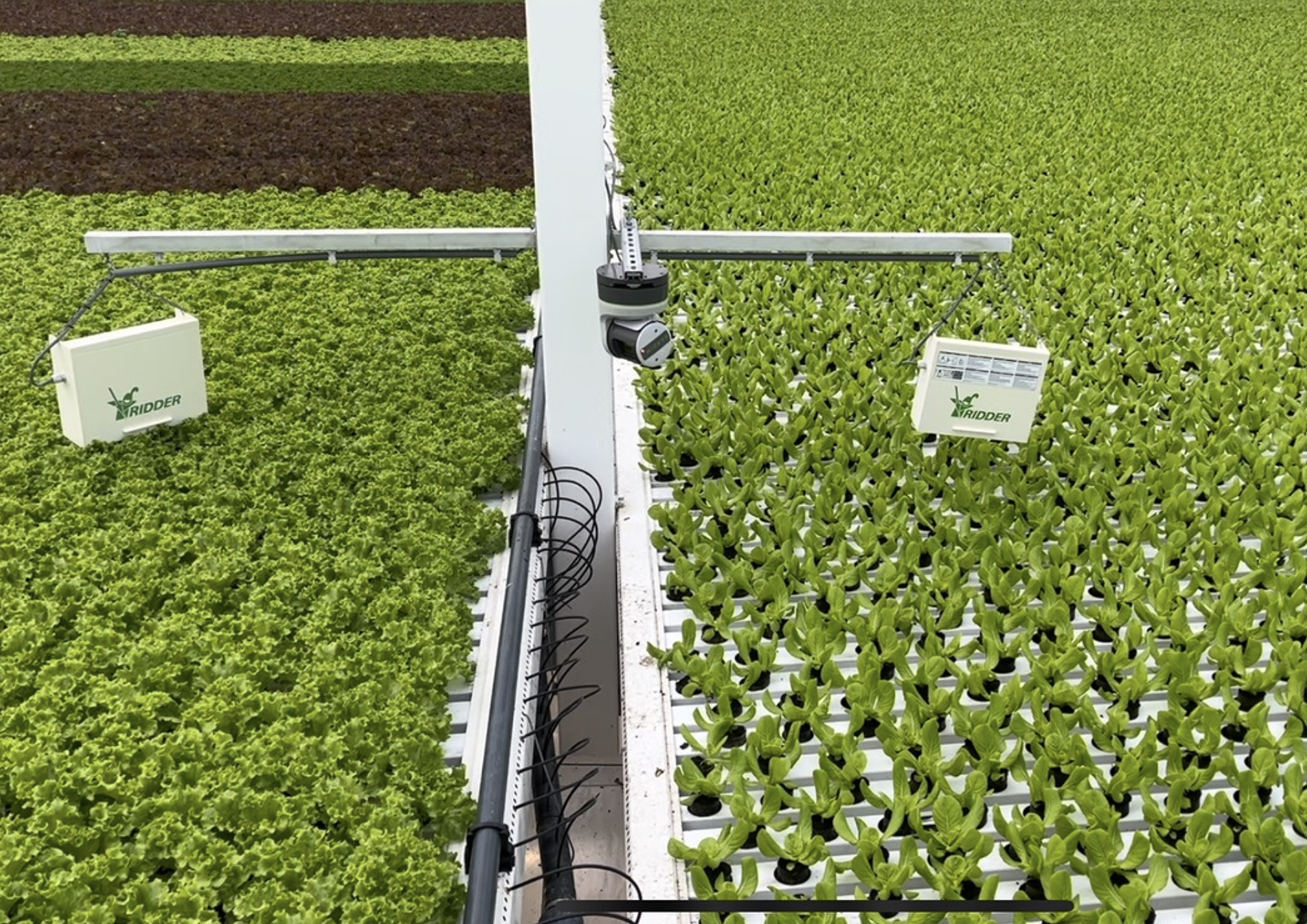Gardin at GreenTech Amsterdam 2025
June 2025
We're still buzzing from a fruitful few days at GreenTech 2025 where we connected with growers, partners and industry leaders from around the world!
Highlights include: unveiling our new integrated product with Ridder, making plant-driven growing more accessible and live demos of the Gardin Pulse solution, which sparked great interest and conversations.

Image Credit: Ridder
Collaboration with Ridder
Real-time crop photosynthesis data from Gardin's sensor and AI is now integrated into the Ridder Hortimax Pro interface, giving growers a single solution to link crop health with environmental conditions.

Real time crop measurement within Hortimax Pro interface
"For years, we've helped growers automate climate control around the crop," said Sander Baraké, Product Director at Ridder. "This next phase is about integrating real-time crop feedback into that loop, shifting from climate control to crop control. Gardin's technology enables exactly that, and Ridder's open platform makes it accessible at scale. Results include profitability boosts of up to 30% by optimizing winter LED efficiency and maximising summer light. Yield increases of up to 15% and early detection of biotic and abiotic stresses by up to 4 weeks before crop walking," he continued.

"This joint product offering enables growers to monitor and control their environment and see the impact on their crops in a single interface for the first time. The product is now being deployed with major growers in Europe and North America," said Sumanta Talukdar, Founder & CEO at Gardin.
Monitoring Health of Crops at Scale & Detecting Issues Before They're Visible to the Human Eye
Watch Sumanta Presenting at Greentech 2025:
Video Credit: GreenTech
If we started Gardin 10 years ago, back then, many of today's challenges - such as climate volatility, economic instability - weren't as visible. Growers relied on time-tested "recipes" that worked for generations. The environment was predictable. That's no longer the case.
Today, climate patterns are erratic, economies are unstable, and the old methods just don't work anymore. Following the same steps no longer guarantees the same results - and that's exactly where Gardin comes in.
Rather than rely on outdated recipes, we measure what's actually happening in the crops. Specifically, we measure photosynthesis at scale. That raw data is converted into simple, actionable insights for growers.
Why does that matter? Because now, working with partners like Blue Radix and Ridder, we can tell growers what their plants are asking for - more light, less light, and so on. Then our partners help growers act on those signals.
The result? Growers give crops what they truly need - leading to better outputs, whether that means higher yield, better quality, or smarter resource use.
How does it work? We're both hardware and software. Our optical sensor, guided by computer vision, scans the crops and measures photosynthesis. That data goes to the cloud, where our software converts it into clear, icon-based insights. No complicated graphs - just simple answers.
At the end of the day, growers like working with us for one reason: we help them make more money.
AI Isn't Replacing the Climate Computer - It's Making It More Valuable Through Connectivity
Video Credit: GreenTech
Joep van Den Bosch, Director of Business Development at Ridder: A few years ago, we thought that with AI entering the greenhouse industry, it would replace the climate computer as we know it. AI really takes over a lot of the decision-making from growers - things like your ideal growing strategy, climate strategy and irrigation. The climate computer is much more than just a machine that controls temperature and humidity. It's actually the central system that connects all the hardware on the ground and brings everything together, including all the safety mechanisms. While AI brings new capabilities, the climate computer isn't being replaced. Instead, it's gaining even more value through connectivity. And for our customers today, it's crucial that even if the internet goes down, the system keeps running just as it always has. That reliability matters. Sumanta, can you explain how the connection works with your sensor?
Sumanta: I think it wasn't the standard before because things were fine. But things aren't fine anymore. If you want to maintain a high-margin operation, you've got to find ways to optimize. That's why this needs to become the standard.
But going back to your point - for us, two-way communication only matters if it brings value to the grower. The grower doesn't care about the tech itself; technology is just a means to an end.
Everything we do starts from that value - we work backwards from it. If something can be done in two steps instead of five, that's value. Our insights are useful, but they need to be shown alongside climate data. You can't separate crop health from its environment - they go hand in hand. So something as simple as being able to view plant health data next to climate data makes a huge difference. It enables real operational optimization.
Honestly, if I have to flip through two screens to find something, I get bored. Growers are busy and require instant clarity. With our spec, it takes less than 5 seconds for them to understand what's happening and what action to take. That's why working with partners who support open platforms is so important. That openness is ultimately how growers get the most value.
Get in touch with our team to see how Gardin can support your goals and help drive meaningful results.